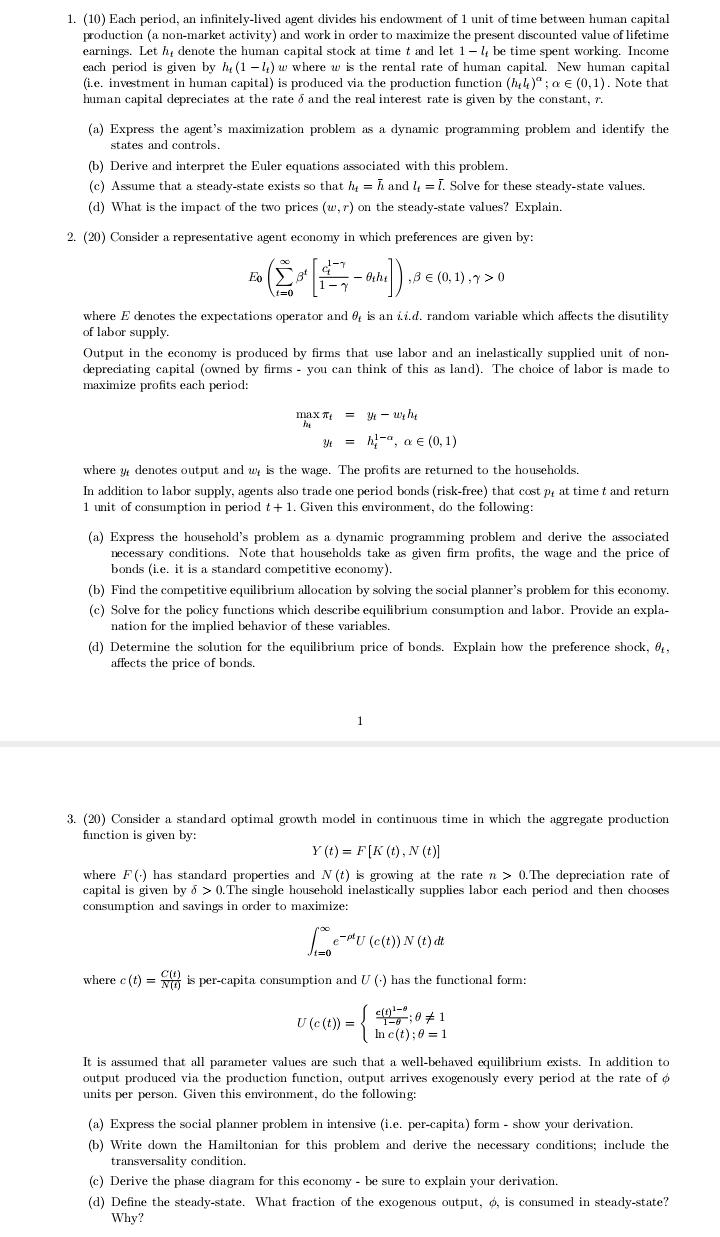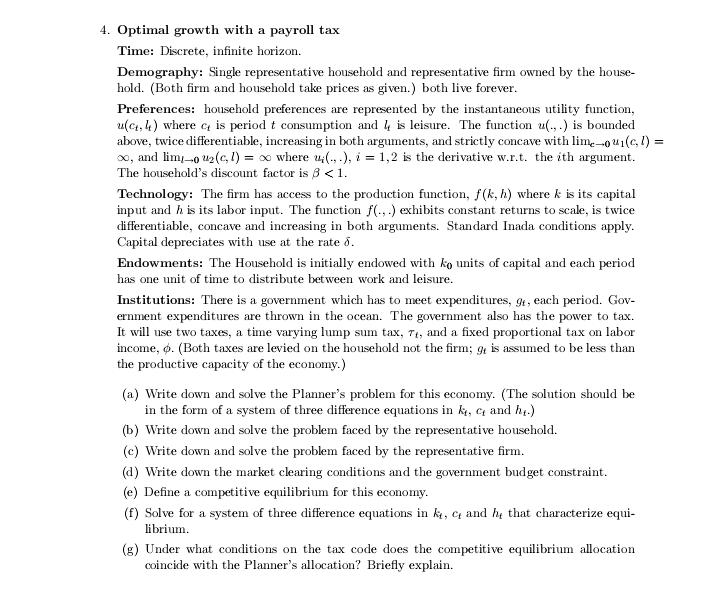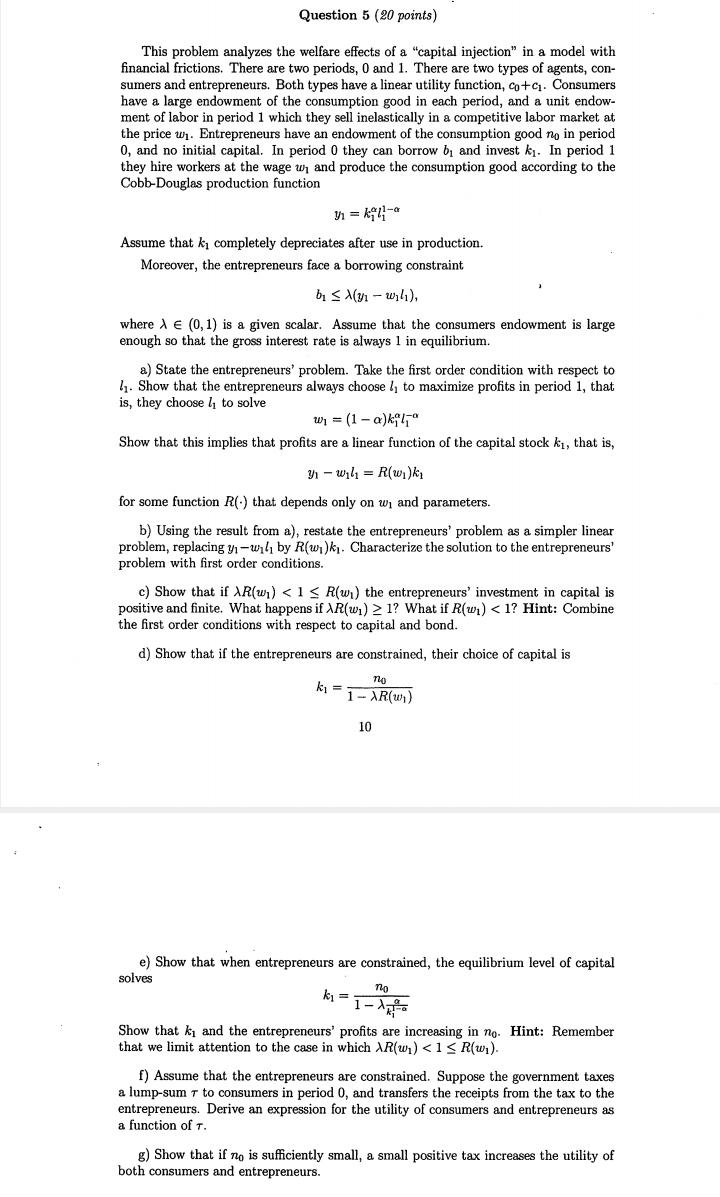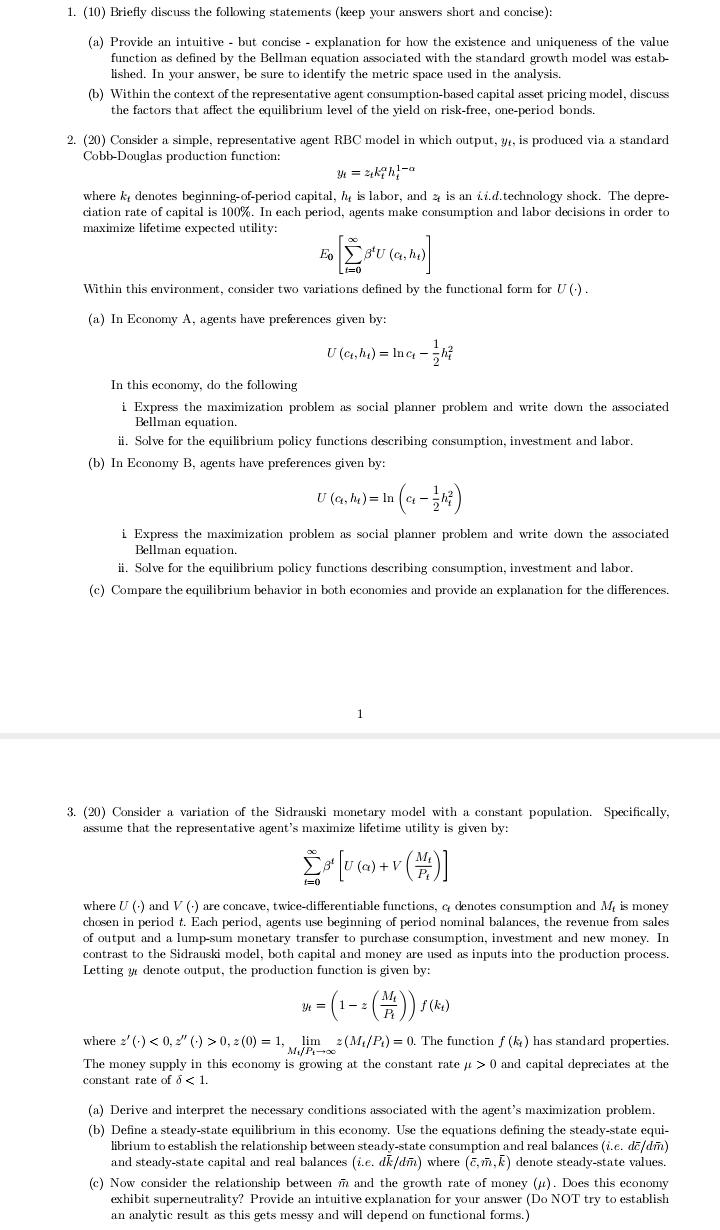



--refer to the attached questions.
1. (10) Each period, an infinitely-lived agent divides his endowment of 1 unit of time between human capital production (a non-market activity) and work in order to maximize the present discounted value of lifetime earnings. Let h, denote the human capital stock at time t and let 1 - 4, be time spent working. Income each period is given by hy (1 -1,) w where w is the rental rate of human capital. New human capital (i.e. investment in human capital) is produced via the production function (h,4)"; a e (0,1) . Note that human capital depreciates at the rate o and the real interest rate is given by the constant, r. (a) Express the agent's maximization problem as a dynamic programming problem and identify the states and controls. (b) Derive and interpret the Euler equations associated with this problem. (c) Assume that a steady-state exists so that he = h and , = 1. Solve for these steady-state values. (d) What is the impact of the two prices (w, ") on the steady-state values? Explain. 2. (20) Consider a representative agent economy in which preferences are given by: EO Co - Act ) , B E ( 0.1) , 720 where E denotes the expectations operator and 0, is an Li.d. random variable which affects the disutility of labor supply. Output in the economy is produced by firms that use labor and an inelastically supplied unit of non- depreciating capital (owned by firms - you can think of this as land). The choice of labor is made to maximize profits each period: max * = y - why 1 = h-", a e (0, 1) where y, denotes output and wy is the wage. The profits are returned to the households. In addition to labor supply, agents also trade one period bonds (risk-free) that cost p, at time t and return 1 unit of consumption in period + + 1. Given this environment, do the following: (a) Express the household's problem as a dynamic programming problem and derive the associated necessary conditions. Note that households take as given firm profits, the wage and the price of bonds (i.e. it is a standard competitive economy). (b) Find the competitive equilibrium allocation by solving the social planner's problem for this economy. (c) Solve for the policy functions which describe equilibrium consumption and labor. Provide an expla nation for the implied behavior of these variables. (d) Determine the solution for the equilibrium price of bonds. Explain how the preference shock, @, affects the price of bonds. 3. (20) Consider a standard optimal growth model in continuous time in which the aggregate production function is given by: Y (t) = F[K (t), N ()] where F () has standard properties and N (t) is growing at the rate n > 0. The depreciation rate of capital is given by o > 0. The single household inelastically supplies labor each period and then chooses consumption and savings in order to maximize: where c (t) = vig is per-capita consumption and U () has the functional form: U (c (t)) = 1-6 :0# 1 In c(t) ; 0 = 1 It is assumed that all parameter values are such that a well-behaved equilibrium exists. In addition to output produced via the production function, output arrives exogenously every period at the rate of of units per person. Given this environment, do the following: (a) Express the social planner problem in intensive (i.e. per-capita) form - show your derivation. (b) Write down the Hamiltonian for this problem and derive the necessary conditions; include the transversality condition. (c) Derive the phase diagram for this economy - be sure to explain your derivation. (d) Define the steady-state. What fraction of the exogenous output, o, is consumed in steady-state? Why?4. Optimal growth with a payroll tax Time: Discrete, infinite horizon. Demography: Single representative household and representative firm owned by the house- hold. (Both firm and household take prices as given. ) both live forever. Preferences: household preferences are represented by the instantaneous utility function, u(c. 4 ) where c, is period t consumption and 4 is leisure. The function u(., .) is bounded above, twice differentiable, increasing in both arguments, and strictly concave with lime-.oun(c !) = co, and limyou(c, 1) = co where wi(., .), i = 1,2 is the derivative w.r.t. the ith argument. The household's discount factor is 8 0, =(0) = 1, lim =(M;/P,) = 0. The function f (ki ) has standard properties. The money supply in this economy is growing at the constant rate , > 0 and capital depreciates at the constant rate of 6














